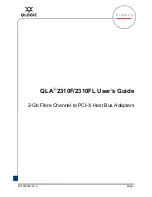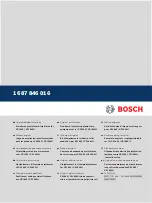
Wireless USB Adapter
Chapter 1: Introduction
Connect your USB-equipped desktop or notebook computer to a wireless net-
work with the Network Everywhere Wireless USB Adapter. Save the trouble of
opening up the case of your desktop computer. To install, simply plug the
Wireless USB Adapter into any available USB port. It gets its power through
the USB connection, so no power cord is necessary. The included Setup Wizard
walks you through configuring the Adapter to your wireless network settings,
step by step.
The Wireless USB Adapter lets you put your computer almost anywhere in the
building, without the cost and hassle of running cables. Now you don’t have to
drill holes in your walls and climb through the attic or cellar to get connected
to the network. Once you’re connected, you can keep in touch with your e-mail,
access the Internet, use instant messaging to chat with friends, and share files
and other resources such as printers and network storage with other computers
on the network.
The Network Everywhere Wireless USB Adapter is fully compliant with the
802.11b wireless network standard, transferring data at up to 11Mbps in the
2.4GHz radio band. And your wireless communications are protected by up to
128-bit encryption, so your data stays secure.
So don’t hassle with running cables through your house—get connected the
easy way with the Network Everywhere Wireless USB Adapter.
•
Up to 11Mbps High-Speed Data Transfer Rate with Automatic Fallback
•
Plug-and-Play Operation Provides Easy Setup
•
802.11b, DSSS, 2.4GHz Compliant
•
Compatible with Microsoft Windows 98SE, Me, 2000, and XP
•
Supports up to 128-bit WEP Encryption Security
•
1-Year Limited Warranty
The Wireless USB Adapter
Features
1
Network Everywhere
®
Table of Contents
Chapter 1: Introduction
1
The Wireless USB Adapter
1
Features
1
Chapter 2: Planning Your Wireless Network
2
Network Topology
2
Ad-Hoc versus Infrastructure Mode
2
Chapter 3: About USB
4
Overview
4
USB Icon
4
USB Cabling
5
Chapter 4: Getting to Know the Wireless USB Adapter 6
The Adapter’s Port and LEDs
6
Chapter 5: Software Installation and Configuration
for Windows 98SE, Me, and 2000
7
Overview
7
Setup Wizard Instructions for Windows 98SE, Me, and 2000
8
Chapter 6: Hardware Installation
12
Hardware Detection for Windows 98SE, Me, and 2000
13
Chapter 7: Driver Installation and Configuration
for Windows XP
14
Overview
14
Driver Installation for Windows XP
14
Windows XP Wireless Zero Configuration
16
Chapter 8: Using the WLAN Monitor for Windows
98SE, Me, and 2000
18
Overview
18
Accessing the WLAN Monitor
18
Link Information
18
Site Survey
21
Profiles
23
Creating a New Profile
25
Appendix A: Troubleshooting
30
Common Problems and Solutions
30
Frequently Asked Questions
30
Appendix B: Glossary
34
Appendix C: Specifications
39
Environmental
40
Appendix D: Warranty Information
41
Appendix E: Contact Information
42



































